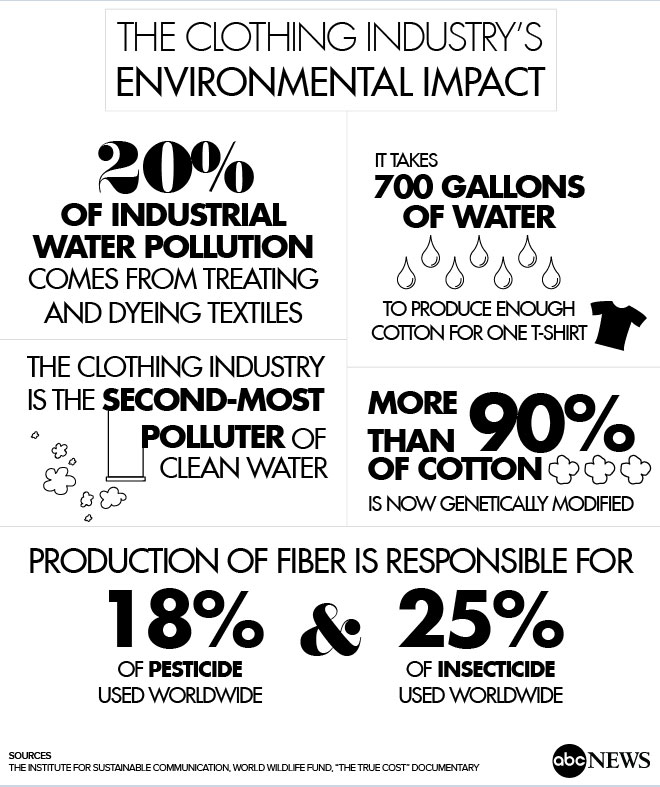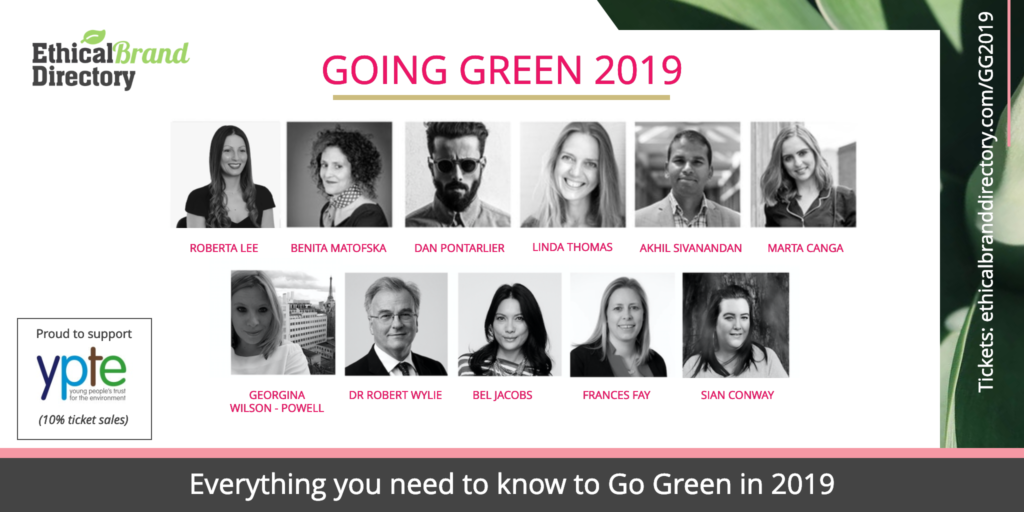Water is the source for all life. But it’s not readily available or safe for everyone. Billions of people still live without clean, safe drinking water.
But what’s fashion got to do with it? Well, the fashion industry is very thirsty.
Water is a key natural resource required for all the steps we sometimes forget about across the supply-chain. Water is used for the irrigation of cotton crops at the start of the process – and again heavily used by us, when we get the garments home (the upkeep and washing of clothes is water intensive too). Fashion is one of the most polluting industries in the world – and it uses and pollutes more natural resources than our planet is able to provide.
Here’s the environmental impact of the clothing industry:

And one step we must not forget is the pollution from dying fabrics, very often done in countries with no regulations – and local communities in “Dye houses in India and China are notorious for not only exhausting local water supplies, but for dumping untreated wastewater into local streams and rivers.” (Guardian)
If you are ready to learn more about what happens when dyes are dumped into the waterways, watch River Blue.
It is estimated that around 79 billion cubic metres of water per year are used in the fashion industry according to Global Fashion Agenda and The Boston Consulting Group (2017) Pulse of the Fashion Industry Report. Based on current trends forecasts this usage by the fashion industry is likely to double by 2030.
So that’s where fashion comes into it all. And that’s why consumers and the fashion industry are all accountable when it comes the United Nation’s Sustainable Development Goal (SDG) number 6.
UN Sustainable Development Goal #6

The United Nations have come up with the SDG #6 to ensure availability and sustainable management of water and sanitation for all by 2030.
Here are the targets:
- By 2030, achieve universal and equitable access to safe and affordable drinking water for all
- By 2030, achieve access to adequate and equitable sanitation and hygiene for all and end open defecation, paying special attention to the needs of women and girls and those in vulnerable situations
- By 2030, improve water quality by reducing pollution, eliminating dumping and minimizing release of hazardous chemicals and materials, halving the proportion of untreated wastewater and substantially increasing recycling and safe reuse globally.
- By 2030, substantially increase water-use efficiency across all sectors and ensure sustainable withdrawals and supply of freshwater to address water scarcity and substantially reduce the number of people suffering from water scarcity
- By 2030, implement integrated water resources management at all levels, including through transboundary cooperation as appropriate
- By 2030, expand international cooperation and capacity-building support to developing countries in water- and sanitation-related activities and programmes, including water harvesting, desalination, water efficiency, wastewater treatment, recycling and reuse technologies
- Support and strengthen the participation of local communities in improving water and sanitation management.
Find out more about this particular SDG here.
SDGs are quite intense and there’s a lot to learn. If you’re just getting started and wanting to contribute to World Water Day you can think more ‘local’. Support events and champion raising awareness.
World Water Day – 22nd March

This year World Water Day (22nd March) is about tackling the water crisis by addressing the reasons why so many people are being left behind. Water is a basic human right and nobody should have to live without it, or forced to drink water that is unsafe.
You can find out more and how to get involved here: https://www.worldwaterday.org/
Water is a valuable commodity – we shouldn’t waste it
Given the environmental status is in crisis, we all need to do out bit. Water could soon be the new currency, more powerful than money. Nobody can live without it – yet so few of us have learnt to truly respect it.
This year we are running our Going Green in 2019 Online Summit – where we will have 10 Changemakers and myself sharing tips and advice on how to care for our planet. This will include how we value water as a future currency.

We want to encourage and inspire everyone to go green, whether that’s at home, at work or in your wardrobe. We all have a role to play – and there are plenty of opportunities to do your bit. Join us on Earth Day to find out more. We’d love to see you there!
What can you do to help?
- Firstly, thinking about water as a precious resource is a start. Applying that to what you do and how you use it a home is a great step.
- Washing your clothes less, having less baths, shorter showers and switching the tap off when you brush your teeth – are the basics.
- You can stop buying clothes for a month, three or a year (like I did back in 2017) and only invest in something new when you can’t find it pre-loved or at a sustainable styling workshop and clothing swap.
- You can then support Ethical Fashion Brands that care about how their clothes are made and the impact it has on the workers and the environment. You’ll save money too, by being selective – you’ll be able to invest in something that will last longer and wear well.
- Many mainstream high street brands don’t prioritise people or planet – and clothes are made just for profit and to feed our fast fashion addiction. Over on EBD our brands care about every step of the supply-chain, and believe business can be done without harming people, planet or animals.
Your Water Awareness Contribution
What 3-things will you do to minimise your water waste at home, at work or in your business? Add your answers in the comments below. I look forward to reading them.

Roberta is the founder of Ethical Brand Directory and Roberta Style Lee. She is a speaker, coach and sustainable stylist. You can connect with her on Instagram: @robertastylelee
Facebook: @robertastylelee
